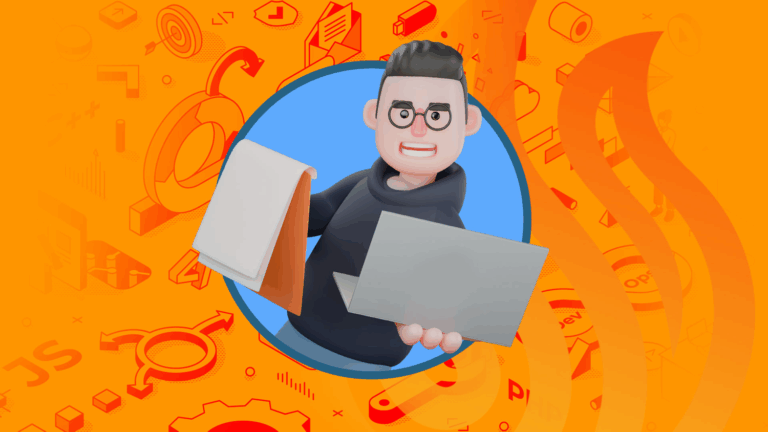Are you interested in working in the digital art and animation industry but don’t have your digital art portfolio ready for employers? While some studios may ask for a regular resume and cover letter combination, the realistic way to get hired as a digital artist is to present a portfolio of works that demonstrate your creativity and technical skill. If an employer can see you have what it takes to design graphics, write code snippets, compose music, make video games, or any other form of digital art, they will be far more willing to hire you.
How Can I Create a Digital Art Portfolio?
There are several steps you can take to compile an impressive portfolio. Before you begin, be sure you have decided which medium and/or art style you would like to focus on. Having some consistency will give people who look at your portfolio a clear understanding of what you can do for them. Keep in mind that you can change course later in your career. For now, keep a steady focus to increase your chances of getting a foot in the door.
Pick your best examples of work based on projects in class.
One of the biggest advantages of attending a creative arts college is the hands-on approach used for learning. Many classes feature group projects that convey the skills necessary to thrive in a professional setting. The experience you obtain in each class is very real, and your best accomplishments can double as portfolio pieces. This dynamic gives you the incentive to put your best foot forward during your education.
Keep in mind that entry-level employers will understand what a student project entails. Nobody expects college work to be as polished as their favorite works of art. This stage is about building confidence in yourself and mustering the courage to show off your credentials to others. Once you get through this intimidating barrier, you will be well on your way to a career in the big leagues.
Set up a website.
A common place to house your portfolio in the digital age is a website. It does not have to be highly advanced, but the layout should be appealing. If you have no idea how to do this, do not worry. A creative arts college will also assist you in developing your portfolio website throughout the curriculum. To get started on this, do some research by searching professional portfolios online. Try not to compare your work. Instead, focus on the design of their website. Getting a taste of what appeals to you will help guide your thought process when compiling your web page.
It is worth noting that your portfolio will be constantly iterated upon as you embark on new projects. If something feels “off” about your initial few attempts, understand this is completely normal. This feeling shows you have the desire to improve. Use this to keep motivated during this important developmental stage of your career.
Create a QR code business card.
Business cards are a tried and tested way of getting more eyeballs to view your work. Of course, the modern age of smartphones means that many people will forget to look you up later if you rely on a paper cutout alone. Instead, offer a QR code on each card that links directly to your portfolio. The more convenient you make it for potential employers to sample your talent, the more chances you will have of impressing the right client.
Develop passion projects in the meantime.
Once you have a presentable portfolio, it can be easy to forget to keep updating it. However, you can always make enhancements and add new projects to your collection. A better portfolio will further enhance your prospects, so feel free to work on things they may not directly result in you being paid. Not only will this keep your skills sharp, but you never know which item on your portfolio will impress a future employer. You might even start your own independent outfit if your project really takes off before a traditional job pans out.
What Should I Include in a Digital Art Portfolio?
Your digital art portfolio should be neatly organized into various sections with an intuitive layout. For example, you could use a single webpage for each type of art that you excel in. Make individual pages for special effects work, 3D models, animations, film segments, and anything else you create. An easy-to-use navigation bar should display links at the top of each page. Keep it simple so the visitor’s focus remains solely on your creations and not the website itself.
It is wise to also have an “about me” page that gives a short and elegant description of your identity as an artist. What makes you unique and interesting? Include a few fascinating personal details. The goal is to sell yourself without sounding too conceited. Another great page to add is a list of your various social media links and other contact info. Much like the QR business card, you want to make it as easy as possible for potential employers to get a hold of you. These details should also include a general location, so recruiters immediately know where you are most suited for work.
How Do I Become an Entertainment Designer?
As mentioned above, the ideal way to prepare for a career as a digital artist is to attend a digital art and animation program with an emphasis on entertainment design. You will learn each step of the creation process and get a chance to practice each portion of the pipeline. This includes traditional art techniques, using professional software, pre-production, post-production, and so much more. Your efforts during each class are turned into tangible projects that can be used on your portfolio website.
Although you could technically view some online tutorials and begin compiling a portfolio from scratch, this approach offers less upside to mentorship from an experienced instructor. The instructors employed by creative arts colleges all have published works to their name. They understand what it means to bring a creative vision to life. An experience like that is hard to come by, and online tutorial makers are often just hobbyists. Some online resources may be effective, but you would have to sift through many outdated teachings as well.
Proper training awards you with the necessary skills and some impressive credentials. Graduates instantly have an accomplishment to proudly display on job boards, portfolios, and websites such as LinkedIn. You can also take advantage of the career services staff at the creative arts college, which helps you acquire that all-important first industry job. Career services will connect you with relevant leads based on your skills and interests. The school’s network is likely far larger than your own at this stage of your career. Utilize pre-established connections to kickstart your career far more efficiently than if you were to venture out on your own.
What Will I Learn During an Entertainment Design Program?
Your education begins with a journey through analog art and the various techniques popularized in masterworks throughout human history. There are basic principles that make any kind of art appealing, and you will dissect them in full detail. This foundational knowledge makes jumping into a digital workspace that much easier.
Next, you will gain experience with the various roles of entertainment designers across the industry. You will start by learning each stage of the production pipeline by engaging in group projects. Not only do these projects impart valuable technical skills, but they also acclimate you to the team-oriented nature of the job. Modern entertainment can require hundreds of people per project. Getting along with that many unique personalities is half the battle. Communication, conflict resolution, and listening are just as important as learning how to animate 3D objects.
You will also learn how to use digital software to make models, animations, special effects, and video game levels to name just a few topics. Technical skills such as texturing and lighting will be covered in detail. Design philosophies, such as perspective, will also be demonstrated to help further enhance your abilities. Entertainment design students also gain access to special augmented and virtual reality tech that can be used to explore the nascent mediums. As the market for both technologies continues to grow, the chance to use VR is a great opportunity.
Final Thoughts
As you practice everything that goes into entertainment design, you will develop material for your portfolio. Completed projects can be added to your portfolio website, which your instructors should also provide some guidance in setting up. Overall, attending a creative arts college to pursue a degree in entertainment design will give you what you need to kickstart your dream career in Entertainment Design.
Want to Learn More?
Ready to get a degree and take the entertainment industry by storm? You can guide an entertainment design project from the page to the screen as you conquer every step to make a winning product. Layering color maps and shading will form the foundation of your entertainment and graphic design skills as you work toward texturing and digital painting. You’ll apply 3D techniques to drawings and renderings as you develop your own personal style in entertainment design projects. You’ll also combine traditional and digital media in elements for design and marketing, video games or animations.
Entertainment Design Degree program students have access to uniquely modern facilities hard to find at other digital art and animation schools, including access to virtual reality and augmented reality equipment and a rendering manager built just for University of Silicon Valley.
University of Silicon Valley is uniquely poised to offer a meaningful and valuable education for 21st century students. We believe in an education that directly correlates with the work you’ll be doing after you graduate. Interested in learning more? Contact Us today.


